Diving With A Great White: Not So Frightening After All






Diving with a Great White: Not so frightening after all
More Posts from Llamaslikesciencetoo and Others

DON’T GO IN THE WATER: NEW EVIDENCE THAT SOME DINOSAURS WERE STRONG SWIMMERS
Claw marks left on a river bottom in Sichuan, China are evidence for dinosaurs’ ability to swim relatively long distances. According to an international team of scientists in the journal Chinese Science Bulletin, theropod species of dinosaurs were able to travel in relatively deep bodies of water.
Keep reading
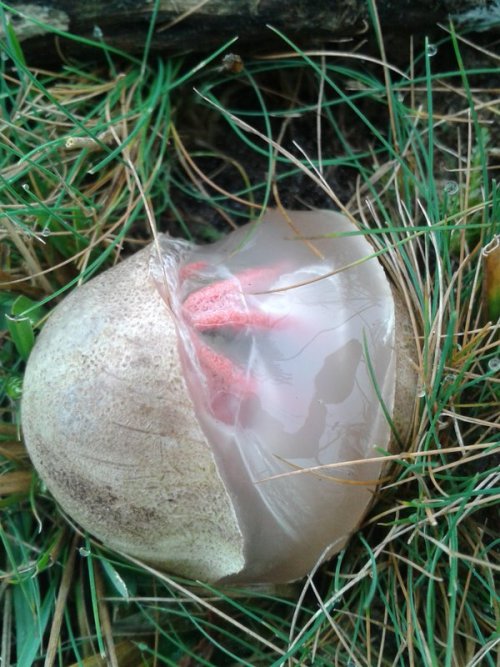
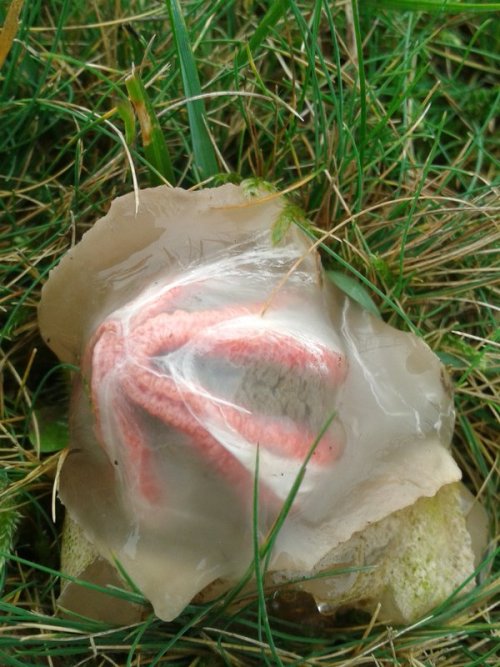
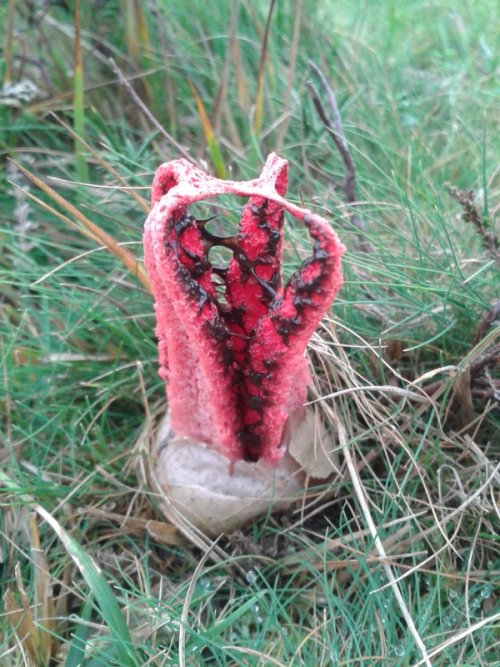
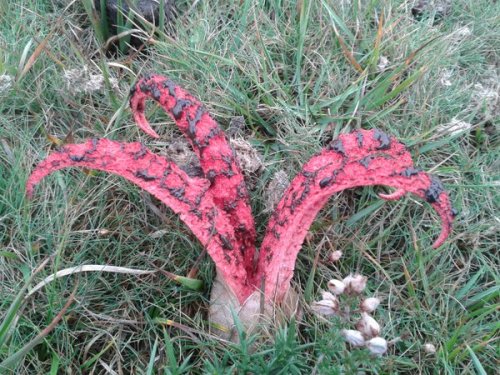
(image credit to Dan Hoare on twitter)
I ONLY JUST LEARNED ABOUT THE EXISTENCE OF THIS MUSHROOM????? WHICH ERUPTS FROM AN EGG BEFORE UNCURLING HELLISH ARMS, EXPOSING ITS STICKY MASS OF SPORES TO BE SPREAD BY FLIES ATTRACTED BY THE SCENT OF ROTTING FLESH???
Admittedly, I am easily won over by all organisms that attract flies with the scent of rotting flesh. But the octopus stinkhorn (Clathrus archeri) also has tentacles, a freaky egg stage, and blackish goop, so it’s my favorite now.

This picture looks just like another dead fish washed up on shore - until you realize that it’s actually a whale, and those are grizzly bears standing on it.
(Source)
Is Ransom Okay I Heard A Coral Reef Died
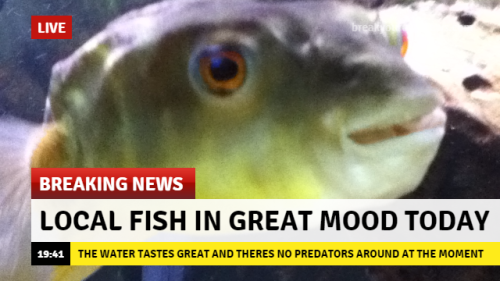





Stages of decomposition
Five general stages are used to describe the process of decomposition in vertebrate animals: Fresh, Bloat, Active and Advanced Decay, and Dry/Remains. The general stages of decomposition are coupled with two stages of chemical decomposition: autolysis and putrefaction. These two stages contribute to the chemical process of decomposition, which breaks down the main components of the body.
Fresh
The fresh stage begins immediately after the heart stops beating.[5] Since blood is no longer being pumped through the body it drains to the dependent portions of the body, under gravity, creating an overall bluish-purple discolouration termed livor mortis or, more commonly, lividity. Shortly after death, within three to six hours, the muscular tissues become rigid and incapable of relaxing which is known as rigor mortis. From the moment of death, the body begins losing heat to the surrounding environment, resulting in an overall cooling called algor mortis.
Once the heart stops, chemical changes occur within the body and result in changes in pH, causing cells to lose their structural integrity. The loss of cell structure brings about the release of cellular enzymes capable of initiating the breakdown of surrounding cells and tissues. This process is known as autolysis. Visible changes caused by decomposition are limited during the fresh stage, although autolysis may cause blisters to appear at the surface of the skin.
Oxygen present in the body is quickly depleted by the aerobic organisms found within. This creates an ideal environment for the proliferation of anaerobic organisms. Anaerobic organisms, originating in the gastrointestinal tract and respiratory system, begin to transform carbohydrates, lipids, and proteins, to yield organic acids (propionic acid, lactic acid) and gases (methane, hydrogen sulphide, ammonia). The process of microbial proliferation within a body is referred to as putrefaction and leads to the second stage of decomposition, known as bloat.
Blowflies and flesh flies are the first carrion insects to arrive, and seek a suitable oviposition site.
Bloat
The bloat stage provides the first clear visual sign that microbial proliferation is underway. In this stage, anaerobic metabolism takes place, leading to the accumulation of gases, such as hydrogen sulphide, carbon dioxide, and methane. The accumulation of gases within the bodily cavity causes the distention of the abdomen and gives a cadaver its overall bloated appearance. The gases produced also cause natural liquids and liquefying tissues to become frothy. As the pressure of the gases within the body increases, fluids are forced to escape from natural orifices, such as the nose, mouth, and anus, and enter the surrounding environment. The buildup of pressure combined with the loss of integrity of the skin may also cause the body to rupture.
Intestinal anaerobic bacteria transform haemoglobin into sulfhemoglobin and other colored pigments. The associated gases which accumulate within the body at this time aid in the transport of sulfhemoglobin throughout the body via the circulatory and lymphatic systems, giving the body an overall marbled appearance.
If insects have access, maggots hatch and begin to feed on the body’s tissues. Maggot activity, typically confined to natural orifices and masses under the skin, causes the skin to slip and hair to detach from the skin. Maggot feeding, and the accumulation of gases within the body, eventually leads to post-mortem skin ruptures which will then further allow purging of gases and fluids into the surrounding environment. Ruptures in the skin allow oxygen to re-enter the body and provide more surface area for the development of fly larvae and the activity of aerobic microorganisms. The purging of gases and fluids results in the strong distinctive odours associated with decay.
Active decay
Active decay is characterized by the period of greatest mass loss. This loss occurs as a result of both the voracious feeding of maggots and the purging of decomposition fluids into the surrounding environment. The purged fluids accumulate around the body and create a cadaver decomposition island (CDI). Liquefaction of tissues and disintegration become apparent during this time and strong odours persist. The end of active decay is signaled by the migration of maggots away from the body to pupate.
Advanced decay
Decomposition is largely inhibited during advanced decay due to the loss of readily available cadaveric material. Insect activity is also reduced during this stage. When the carcass is located on soil, the area surrounding it will show evidence of vegetation death. The CDI surrounding the carcass will display an increase in soil carbon and nutrients, such as phosphorus, potassium, calcium, and magnesium; changes in pH; and a significant increase in soil nitrogen.
Dry/remains
During the dry/remains stage, the resurgence of plant growth around the CDI may occur and is a sign that the nutrients present in the surrounding soil have not yet returned to their normal levels. All that remains of the cadaver at this stage is dry skin, cartilage, and bones, which will become dry and bleached if exposed to the elements. If all soft tissue is removed from the cadaver, it is referred to as completely skeletonized, but if only portions of the bones are exposed, it is referred to as partially skeletonised.


Palau vs. the Poachers
The isolated nation of Palau, in the South Pacific, comprises 250 small islands that take up only 177 square miles combined. But international law extends its authority to 200 miles from its coast, giving it control over 230,000 square miles of ocean. For a relatively poor country with no military and a tiny marine police division, and waters teeming with poachers, it’s a tall order. But, as The New York Times reporter Ian Urbina writes, Palau has mounted an aggressive response: it has banned bottom trawling and shark fishing, employed the latest in surveillance technology, and provided a model for collaboration among countries, companies and NGOs.
Reportage photographer visited Palau on assignment for The Times to show the marine police’s efforts and the natural resources they are trying to protect.
Read the article in this week’s issue of The New York Times Magazine.



Meet the orchid mantis.
Orchid mantises—particularly juveniles—seem aptly named. They’re predominantly white with pink or yellow accents, similar to some orchids and other flowers, and their four hind legs are lobed, like petals. But if you search for an exact floral counterpart, as behavioral ecologist James O’Hanlon did, you probably won’t find one. “I spent forever looking for a flower that they look just like,” he says, to no avail.
As it turns out, rather than mimicking one floral species, the insect instead may embody a “generic or an average type of flower” in order to attract bees and other pollinating insects as prey.
What’s more, as far as O’Hanlon can tell, it’s the only animal on record that “takes on the guise of a whole flower blossom” as a predatory strategy.
Learn more here.



A study of Saurian morphology: Pseudosuchia (part 2)
Look at that. It’s a croc. With flippers. Yes it did actually exist.
Note to self: learn to schedule these things better. Coming back home after a long day of work to find out I had to do something with a ton of scales is NOT. AT. ALL. FUN. I’ll have to fix dem legs one day but right now I just can’t be bothered.
Edit: oh hey that sucker doesn’t look as bad as I originally had in mind.
- - -
Will Art for Science · Find me elsewhere

-
 aosteve liked this · 1 year ago
aosteve liked this · 1 year ago -
 planeteclaude liked this · 1 year ago
planeteclaude liked this · 1 year ago -
 eggertpunket liked this · 1 year ago
eggertpunket liked this · 1 year ago -
 lowlowsworld liked this · 1 year ago
lowlowsworld liked this · 1 year ago -
 anitahernandezsworld liked this · 1 year ago
anitahernandezsworld liked this · 1 year ago -
 rap-taquito21 liked this · 1 year ago
rap-taquito21 liked this · 1 year ago -
 paranoiajv liked this · 1 year ago
paranoiajv liked this · 1 year ago -
 heidivanderlee liked this · 1 year ago
heidivanderlee liked this · 1 year ago -
 tiredmexicanwholovesreading reblogged this · 5 years ago
tiredmexicanwholovesreading reblogged this · 5 years ago -
 bluetangclan reblogged this · 6 years ago
bluetangclan reblogged this · 6 years ago -
 almxghty-ky reblogged this · 6 years ago
almxghty-ky reblogged this · 6 years ago -
 almxghty-ky liked this · 6 years ago
almxghty-ky liked this · 6 years ago -
 surgikos liked this · 6 years ago
surgikos liked this · 6 years ago -
 custardshark liked this · 6 years ago
custardshark liked this · 6 years ago -
 godinbirdsandsataninlongwords reblogged this · 6 years ago
godinbirdsandsataninlongwords reblogged this · 6 years ago -
 godinbirdsandsataninlongwords liked this · 6 years ago
godinbirdsandsataninlongwords liked this · 6 years ago -
 mistress5perverse0makayla liked this · 6 years ago
mistress5perverse0makayla liked this · 6 years ago -
 bluemchenpia liked this · 6 years ago
bluemchenpia liked this · 6 years ago -
 ambitiousfrequency liked this · 6 years ago
ambitiousfrequency liked this · 6 years ago -
 adventuresong reblogged this · 6 years ago
adventuresong reblogged this · 6 years ago -
 fanofthestuff liked this · 7 years ago
fanofthestuff liked this · 7 years ago -
 vincentblack liked this · 7 years ago
vincentblack liked this · 7 years ago -
 90775 reblogged this · 7 years ago
90775 reblogged this · 7 years ago -
 scrumptiouslysporadicwasteland liked this · 7 years ago
scrumptiouslysporadicwasteland liked this · 7 years ago -
 mypurplecolorqueen-blog liked this · 7 years ago
mypurplecolorqueen-blog liked this · 7 years ago -
 oyleebiriiste reblogged this · 7 years ago
oyleebiriiste reblogged this · 7 years ago -
 sometimesthedemonwin reblogged this · 7 years ago
sometimesthedemonwin reblogged this · 7 years ago -
 liquorless reblogged this · 7 years ago
liquorless reblogged this · 7 years ago -
 riker18-blog liked this · 7 years ago
riker18-blog liked this · 7 years ago -
 quellongreyjoy reblogged this · 7 years ago
quellongreyjoy reblogged this · 7 years ago -
 low-level--00 reblogged this · 7 years ago
low-level--00 reblogged this · 7 years ago -
 low-level--00 liked this · 7 years ago
low-level--00 liked this · 7 years ago -
 soul-vector reblogged this · 7 years ago
soul-vector reblogged this · 7 years ago -
 adrienmichaels liked this · 7 years ago
adrienmichaels liked this · 7 years ago -
 capturelifeconnection reblogged this · 7 years ago
capturelifeconnection reblogged this · 7 years ago -
 crabsnctenophores liked this · 7 years ago
crabsnctenophores liked this · 7 years ago -
 paddling-with-sharks reblogged this · 7 years ago
paddling-with-sharks reblogged this · 7 years ago -
 mxrvndasxvrra liked this · 7 years ago
mxrvndasxvrra liked this · 7 years ago
Mainly interested in ecology, but also the entirety of science.
179 posts